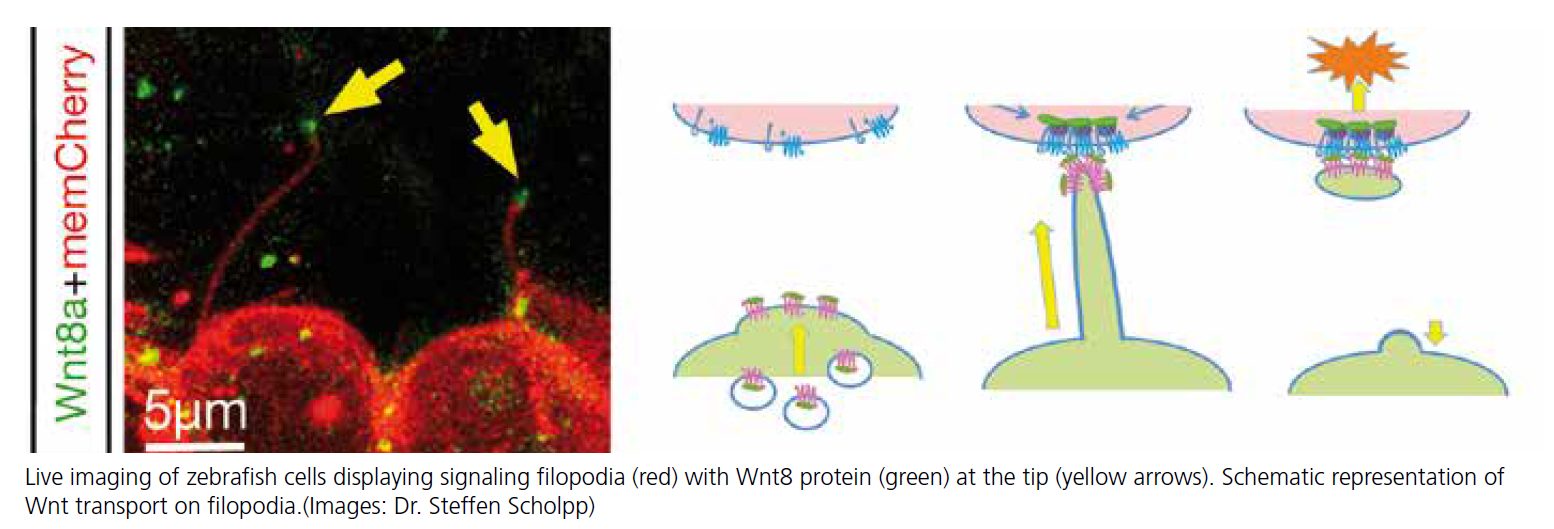Life science meets simulation – Nature reports
Cells reach out to each other by forming slender microspikes or filopodia. Signaling proteins attached to the tips of these structures can, thereby, be passed on to neighboring cells. But how can they actually be distributed over the whole organism? At the coffee table, developmental biologist Dr. Steffen Scholpp meets up with his fellow YIN member and simulation expert Dr. Alexander Schug: The ideal combination for working out a robust computational model on how cells communicate over larger distances. The result of this YIN-funded project were published in Nature Communications.
Tissue development is a key process for life starting from the earliest embryonic stages during which stem cells differentiate into later organs composing the entire body. An essential component for these developmental processes but also for tissue regeneration and stem cell regulation is the communication of cells by chemical signaling. As a consequence, mis- or deregulated communication are often linked to human birth defects, cancer, and other major diseases.
The highly conserved family of Wnt proteins represents important regulators of all these proprocesses mentioned above by inducing responses in a concentration dependent manner. The Scholpp laboratory identified a novel way of spreading of Wnt proteins in vertebrates: Wnt molecules are mobilized on specific cell protrusions so-called signaling filopodia. These specialized filopodia transmit signaling proteins between communicating cells and allow a high degree of control of propagation speed, direction and concentration of the transmitted ligand. The signaling molecules are delivered directly to the receiving cells by a direct contact model and parameters such as filopodia length or speed of filopodia formation dictate local Wnt concentration.
As it is very difficult to determine the specific impact of individual parameters in a complex biological system by a purely experimental approach, the Schug laboratory complemented the experimental measurements with computational modeling. Currently, both laboratories develop a robust quantitative mathematical model for the distribution of signal molecules on the basis of signaling filopodia.


